| | These days, bad news travels with the speed of a plunging Peregrine Falcon. The good news? It’s rooted to one spot like a patiently hunting Great Blue Heron before taking a few long, slow flaps of its wings to carry it just a little further downstream. By now you have heard or read many times that the state of America’s birds is bad, really bad. The latest State of the Birds 2025 report shows rapid population declines across the United States. Loss of habitat, rampant development, climate change, chemicals and pesticides, you name it. And the situation is made worse by the new Trump administration that has been busily shredding the Federal workforce and the agencies responsible for the environment, climate change, industrial pollution, and more. Is there any hope to protect the birds, the ecosystems they rely on, even ourselves? Yes, I believe there is. You will find more bad news for the birds and the environment in this March issue of RCC’s Bird Watch and Wonder – just look in our “Birds and Our World” section to find that, among other dangers, our birds are breathing microplastics and absorbing PFAs. 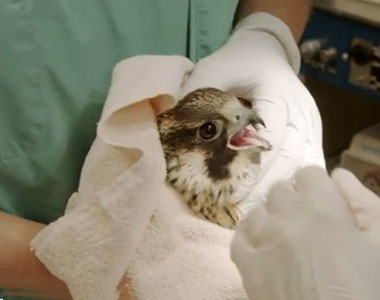 But there is good news slowly taking flight and making its way upstream. There are around 100,000,000 birders these days in the United States and their number is growing. And, increasingly, they not only observe, count and enjoy birds, they are taking many kinds of action to protect them and to celebrate them. That’s why you’ll find in our “Action and Advocacy” section seven simple things you can do right now to help the birds around your house, a dozen steps you can take to protect migrating birds this spring, and you’ll be heartened to learn how offshore wind – falsely accused by President Trump as a major bird killer – is growing and being designed with more and more technical advances to keep birds safe. But there is good news slowly taking flight and making its way upstream. There are around 100,000,000 birders these days in the United States and their number is growing. And, increasingly, they not only observe, count and enjoy birds, they are taking many kinds of action to protect them and to celebrate them. That’s why you’ll find in our “Action and Advocacy” section seven simple things you can do right now to help the birds around your house, a dozen steps you can take to protect migrating birds this spring, and you’ll be heartened to learn how offshore wind – falsely accused by President Trump as a major bird killer – is growing and being designed with more and more technical advances to keep birds safe. Trump and his allies are famed for threatening lawsuits for anyone who tries to disagree with them, but fewer Americans know that conservation groups, large and small, battle in court each time the right-wing moves to wreck our hard won environmental gains. Earthjustice, for one, has just taken legal action to block a conservative group’s lawsuit in Florida to do away with protections for the endangered Florida Scrub Jay under the Endangered Species Act (ESA), and a state conservation plan specifically designed to save the Scrub Jay. 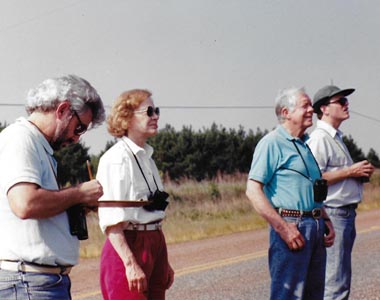 And, of course, we bird lovers take joy in looking at and enjoying the birds. You may be surprised to learn in our “Bird Lore” section that President Jimmy Carter and First Lady Rosalynn (like Teddy Roosevelt before them) were avid birders who took part in finding and counting birds for the Breeding Bird Survey (BBS) that catalogues birds nationwide. The BBS was established in 1966 by Chan Robbins of the Patuxent Research Center (USFWS), a friend and colleague of Rachel Carson’s, who shared the emerging science of the dangers of DDT with her that she used in Silent Spring. And, of course, we bird lovers take joy in looking at and enjoying the birds. You may be surprised to learn in our “Bird Lore” section that President Jimmy Carter and First Lady Rosalynn (like Teddy Roosevelt before them) were avid birders who took part in finding and counting birds for the Breeding Bird Survey (BBS) that catalogues birds nationwide. The BBS was established in 1966 by Chan Robbins of the Patuxent Research Center (USFWS), a friend and colleague of Rachel Carson’s, who shared the emerging science of the dangers of DDT with her that she used in Silent Spring. 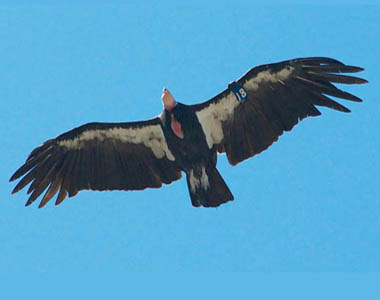 Such fascination with birds begins with learning to enjoy looking at them. In “Bird Findings” you’ll find a guide to getting good, small binoculars, and a simple key to telling apart all those waterfowl bobbing, dabbling, and diving out on the water – by learning where the white on their bodies is located. And, of course, our master bird observer, Ross Feldner, makes it fun and easy to spot them – at least those with huge wingspans – with his compilation of which birds are big, bigger, biggest – including the California Condor with a nearly ten foot wingspan! Such fascination with birds begins with learning to enjoy looking at them. In “Bird Findings” you’ll find a guide to getting good, small binoculars, and a simple key to telling apart all those waterfowl bobbing, dabbling, and diving out on the water – by learning where the white on their bodies is located. And, of course, our master bird observer, Ross Feldner, makes it fun and easy to spot them – at least those with huge wingspans – with his compilation of which birds are big, bigger, biggest – including the California Condor with a nearly ten foot wingspan! 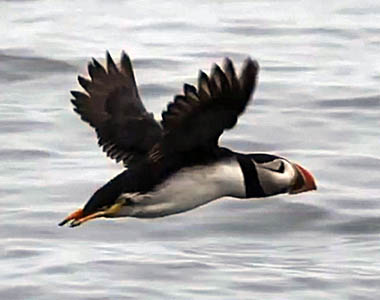 This fascination with all things avian – by many millions of Americans – is still growing. Look at our features in “Bird Art,” at Charlie Corbett’s new book 12 Birds to Save Your Life: Nature's Lessons in Happiness, or Marley, the penguin, who is a TikTok star and delights us with her paintings at Moody Gardens in Galveston, Texas. Then reflect in “The Best of Momentary Mediations” on Stephen Shick’s latest musings watching puffins flying through the morning fog and how they seem to find joy in life and in just being together. This fascination with all things avian – by many millions of Americans – is still growing. Look at our features in “Bird Art,” at Charlie Corbett’s new book 12 Birds to Save Your Life: Nature's Lessons in Happiness, or Marley, the penguin, who is a TikTok star and delights us with her paintings at Moody Gardens in Galveston, Texas. Then reflect in “The Best of Momentary Mediations” on Stephen Shick’s latest musings watching puffins flying through the morning fog and how they seem to find joy in life and in just being together. Despite the dangers and declines for birds, along with the efforts of Donald Trump to drain wetlands, drill for oil, sell off, privatize and develop Federal lands, and eliminate environmental protections, there are other stories, other news, other actions taking place. You may have to look hard to find it, but the good news of Americans loving birds, fighting to protect them, creating bird art, and writing about how the birds can actually save lives is all around us. It is why with each issue of Bird Watch and Wonder we try to offer hope and to help the good news take flight. | | | | | | 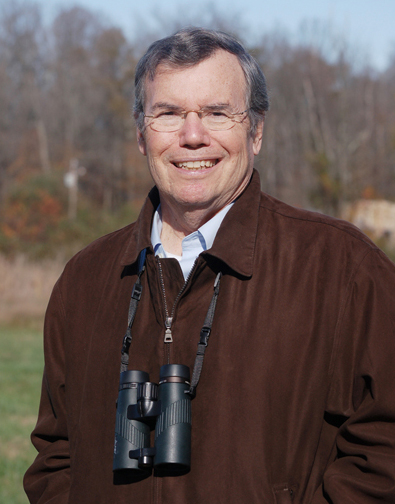 Bob Musil is the President & CEO of the Rachel Carson Council and author of Rachel Carson and Her Sisters: Extraordinary Women Who Have Shaped America’s Environment (Rutgers, 2016) and Washington in Spring: A Nature Journal for a Changing Capital (Bartleby, 2016). He is also the editor of the forthcoming annotated edition from Rutgers University Press of Rachel Carson’s Under the Sea-Wind with his Introduction, updated marine science, and historic and contemporary illustrations and photographs. Bob Musil is the President & CEO of the Rachel Carson Council and author of Rachel Carson and Her Sisters: Extraordinary Women Who Have Shaped America’s Environment (Rutgers, 2016) and Washington in Spring: A Nature Journal for a Changing Capital (Bartleby, 2016). He is also the editor of the forthcoming annotated edition from Rutgers University Press of Rachel Carson’s Under the Sea-Wind with his Introduction, updated marine science, and historic and contemporary illustrations and photographs. | | | | | | A Sweeping New Report Shows U.S. Birds Declining Sharply Across a Range of Habitats Scientists checked in on species all over the country for the latest State of the Birds report. Nearly everywhere they looked, birds were struggling—including some that have been resilient in the past. Whether they hop around the prairie, dabble in wetlands, flit through forests, or forage along the shore, birds are suffering rapid population declines across the United States. | | | | | | | | Seven Simple Actions to Help Birds In 2019, scientists documented North America’s staggering loss of nearly 3 billion breeding birds since 1970. Helping birds can be as simple as making changes to everyday habits. Here’s our quick list of 7 Simple Actions you can take to help birds. And in case anyone asks you why bird conservation is so important, here are five specific, bedrock reasons why birds matter and an in-depth article on the economic value of birds. | | | | | | | | Responsible Offshore Wind Development is a Clear Win for Birds, the U.S. Economy, and our Climate Too often, the debate over climate solutions centers on perceived trade-offs between habitat conservation and the clean energy transition, preserving community and allowing development, or reducing pollution and maintaining profitability. But responsible clean energy deployment can be balanced with the needs of communities and wildlife, representing a win-win that doesn’t give rise to insurmountable trade-offs. | | | | | | | | Conservation Groups Take Legal Action to Ensure Survival of Declining Florida Scrub-Jay Four conservation groups, represented by Earthjustice, filed a request in federal court today to defend critical protections for the imperiled Florida Scrub-Jay. The groups are requesting to intervene in a 2024 lawsuit filed by a national conservative legal organization, Pacific Legal Foundation, in Florida's Middle District. The lawsuit seeks to remove Endangered Species Act (ESA) protections from the Florida Scrub-Jay and to scrap Charlotte County's decade-old Florida Scrub-Jay Habitat Conservation Plan. | | | | | | | | Thirteen Tips to Make the Journey Safer for Migrating Birds Right now, millions of birds are on their way north to their breeding grounds, drawn by the abundant food sources and nesting sites that await them. Their journeys, sometimes spread out across weeks of long-distance flights, are not only intense; they are also fraught with danger. Many of the warblers, tanagers, flycatchers, and other migratory birds en route now will never make it to their breeding territories. Bright artificial lights at night, when many birds are migrating, can draw them off course into a maze of reflective surfaces. | | | | | | | | Five Years After 3 Billion Birds Lost, Scientists Plan A Road to Recovery The word came in a cellphone text from finch researcher Matt Young, who was scouting along a forest road in northern Minnesota’s Sax-Zim Bog: “Grosbeaks coming in!” About a quarter-mile away scientist David Yeany was sitting in a makeshift blind, which was really an insulated ice-fishing pop-up shelter—perfect for staying warm in a frozen bog where winter temps can kiss minus 40. | | | | | | | | Big. Bigger. Biggest. Meet the largest birds (by wingspan) in the United States. The United States is a large country with a vast diversity of habitats and biomes, so it’s no surprise that it contains over a 1,000 bird species. Being the third largest country in the world also means it has almost ever immaginable terrain, including two oceans, huge forests, deserts, mountains and mighty rivers. Like the country itself, many of the bird species that call it home are enormous. Some with wingspans of over 9 feet! A number of these large birds are predators that feature sharp powerful beaks, dagger sharp talons that make them formidable hunters. | | | | | | | | Where’s the White? A Simple Question can be the Key in Waterfowl ID Ducks can be confusing to identify, especially on those gray autumn days when mixed waterfowl bobbing on the waves all seem to have the same general shape and plumage. Instead of puzzling over bill shape or parsing out green head markings and blue patches on the upperwing coverts, the Cornell Lab of Ornithology’s Kevin McGowan boils waterfowl identification down to one simple question: Where’s the white? McGowan says that if you can see where the white is on a duck, you stand a good chance of correctly identifying the species. | | | | | | | | Pocket Binocular Review: Our Search for the Best Tiny Binoculars These binoculars are so small they're almost not there, and some models deliver serious optical quality. Binoculars don’t have to be big to be bright. That’s the main takeaway from our recent review of pocket binoculars—the smallest and most packable category of binoculars on the market. In our review, we tested 13 pocket binoculars representing a wide range of prices, from about $100 to nearly $1,000. | | | | | | | | How Rare Is That Rare Bird? Of the many stories about vagrant birds we’ve covered at Audubon, one remains stuck in my craw. In the spring of 2017, an incredible bit of happenstance occurred: A brilliant Vermilion Flycatcher, native to the Southwest, was recorded alighting on a branch at Audubon’s Hog Island in Maine. This was shocking for two reasons: Not only was the small bird extremely far from home, but a webcam streaming live just happened to be trained on the exact twig the flycatcher had perched on. | | | | | | | | A Rare Bird Sighting Made Our Bethesda Backyard an Attraction The Bullock’s oriole, a native of the Great Plains or Far West, typically spends winters in Mexico. Many Washingtonians feed the birds, especially in winter, when birds’ natural fare is in short supply. We do this for two reasons: We want our avian neighbors to be adequately provisioned, and we like to look out the window and see birds in the backyard. On a recent snowy day, it was a pleasure to see a half-dozen male northern cardinals perched high and low, their brilliant red plumage glowing in the winter sun. | | | | | | | | Carolina Wrens and the Carters – A Brief History of the North American Breeding Bird Survey Former President Jimmy Carter and First Lady Rosalynn were avid birders who assisted in the BBS, one of the nation’s most foundational sources for long-term, scientific bird population data. Did you know that the USGS’s North American Breeding Bird Survey (BBS) has a bit of a presidential history? Former President Jimmy Carter and First Lady Rosalynn were avid birders who assisted in the BBS, one of the nation’s most foundational sources for long-term, scientific bird population data. | | | | | | | | | | 8 Bird Migration Myths, From Past to Present My younger brother once posed a seemingly simple question to our father. “Why do geese fly south for winter?” Our dad responded with a beautiful thesis about bird migration. He talked about the seasons, mentioned food availability, he even touched on the aerodynamic flight patterns of the classic “V” formation. My brother thoughtfully listened, before bolding declaring that our father was wrong. “No dad. It’s because it is too far to walk.” | | | | | | | | Owls In Native American Cultures We humans love owls. Why not? With their flat faces and forward facing eyes they look more like us than any other bird. It is only the owls at our program that prompt people to go “awwwww.” But do all people love owls? One day I was holding Teasdale, our Great Horned Owl, when a man walked past holding his hand up to the side of his face to shield his eyes from viewing Teasdale. A visitor I was talking to at the time told me that some Native Americans feared seeing owls as they were considered bad omens. But is this true of all Native Americans? | | | | | | | | Threats to Birds Migratory birds face numerous threats throughout their annual cycles from human-caused sources. The U.S. Fish & Wildlife Service is working with governments, conservation organizations, industry, and the public to reduce threats across the North American landscape to preserve our birds for future generations. There are also many easy ways anyone in the general public can help protect birds around your communities. | | | | | | | | Bird Flu is Taking a Massive Toll on Wild Animals, Researchers Find Researchers are reporting mass die offs of wild birds and sea mammals due to bird flu. They're tracking the deaths to better understand the virus and how it might create a greater threat to humans. An unprecedented number of people in the U.S. were infected with bird flu this past year. In this country, a lot of science focused on the virus in dairy cows and in poultry. But researchers say something ominous is happening in wild animals and not just birds. | | | | | | | | Bird Study Finds Much Larger Volumes of Toxic PFAS Chemicals Than Previously Reported Researchers studying birds and the food they eat are now finding much larger volumes of the toxic PFAS chemicals than before. The substances either never break down or degrade very slowly, which is why they are called "forever chemicals." "PFAS have received a lot of attention in recent years. This is because they are so widely used in industry, at the same time as these substances can also be harmful to many different organisms," said. | | | | | | | | Birds Breathe in Dangerous Plastics—and So Do We Microscopic plastic pollutants drifting through the air are lodging in the lungs of birds, a new University of Texas at Arlington study finds. Researchers worldwide are increasingly alarmed by how pervasive these harmful particles are in the air humans breathe and the food they eat. Birds were chosen for the study because they are found in almost every corner of the world and often share environments with humans. | | | | | | | | Birds Face Weakened Protections Under Trump Move The Interior Department is suspending 20 Biden-era legal opinions, including one leading to fines against energy companies if birds die in oil spills or other industrial activities. In a reprise of the first Trump administration, migratory birds are again facing weakened protections under federal law. The issue at hand: Should companies be held responsible if birds are killed accidentally, for example in oil spills or waste pits? | | | | | | | | Ducks Were Once a Conservation Bright Spot. Now They're Declining in the US, New Report Shows A new report says at least 112 North American bird species have lost more than half their populations in the past 50 years. At least 112 North American bird species have lost more than half their populations in the past 50 years, according to a new report published Thursday. Among the birds showing the steepest declines are Allen’s hummingbirds, Florida scrub jays, golden-cheeked warblers, tricolored blackbirds and yellow-billed magpies. | | | | | | | | Artists Encouraged to Apply For 2025 Exhibit Birds of a Feather at Airlie Gardens NEW HANOVER COUNTY, NC – Airlie Gardens is looking for artists, or teams of artists, to decorate, paint, and adorn one of ten oversized fiberglass birds for the gardens’ newest art exhibit, Birds of a Feather. These artist-decorated sculptures will be placed throughout the grounds for guests to enjoy as part of their garden experience from July through December 2025. | | | | | | | | At Alaska’s Yakutat Tern Festival, Seabirds and Local Culture Soar Vengeance leaves the harbor at around 8 a.m. The 30-foot aluminum boat is captained by Mark Sappington, the owner of Yakutat Charter Boat Company, who navigates the waters in a Carhartt jacket with the words “Fish Master” embroidered on the front pocket. Fishing lures jingle like wind chimes as the boat picks up speed, passing Arctic Terns and Black-legged Kittiwakes on the way to Disenchantment Bay and Hubbard Glacier. | | | | | | | | Bird Symbolism In Native American Art Native Americans have a deep connection to and respect for the natural world, and their reverence for nature deeply influences their art. Eagles are particularly revered for their ability to fly so close to the heavens, carrying the prayers of the people to the spirit world. Feathers of all birds, and especially eagles, are an iconic design in Native American jewelry and art. According to Smithsonian Magazine, “Birds are integral to Native American culture – they are connected to the spiritual because of their ability to move throughout the earthly and heavenly (sky) realms…” | | | | | | | | Viral Penguin Video Charms Fans: ‘What am I doing with my life and why is it not this’ For almost 20 years, Marley the penguin has been an artist. More recently, her fame has skyrocketed. Twice a week, Marley hops into an art room at Moody Gardens in Galveston, Texas, jumps onto a sponge soaked with nontoxic paint, and coats the bottoms of her feet in bright blue, green, yellow or purple. Then the squat northern rockhopper penguin walks a couple of times across an 8-by-10 canvas while a biologist showers her with enthusiastic praise. | | | | | | | | Red-shouldered Hawk The Red-shouldered Hawk is a slender, forest-dwelling Buteo species found throughout much of the eastern United States and southeastern Canada, as well as in Oregon, California, and Mexico. These hawks prefer large, mature, contiguous forests with mixed deciduous and coniferous trees and open understories. In the early 1900s, the Red-shouldered Hawk was the most common Buteo in New England, but intensive 20th century logging of mature forests led to loss of suitable habitat. | | | | | | | | Momentary Meditations are published every Monday to awaken what Rachel Carson called “the sense of wonder” and what Albert Schweitzer called “a reverence for life.” Looking deeply into our interdependence with all life on earth helps us know what we must do. In our harried world, these meditations are meant to serve as a renewable resource for compassion and love. Landing in Fog – Stephen Shick Descending through the fog, these puffins brought a lightness of spirit to a gray morning. They appeared to delight in being together, a gift of life that we too cherish but often forget. | | | | | | | | Enjoy Birdwatching By Going to Festivals A great way to enjoy birdwatching is by going to festivals—they’re organized to get you to well-known birding spots at the right time of year, and they’re a perfect way to meet people. Experts and locals help you see more birds, and you’ll meet other visitors who share your hobby. While you’re there, keep an eye out for Cornell Lab representatives, as we do attend several festivals each year. | | | | | | | | | 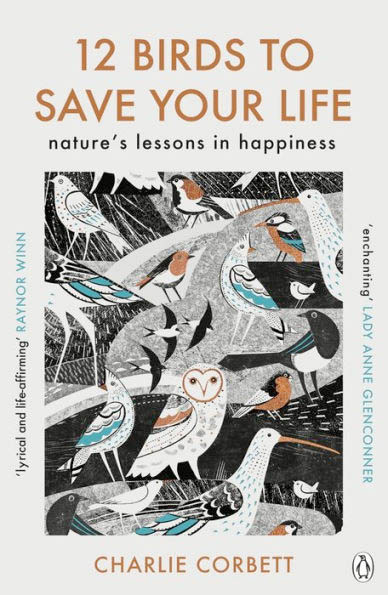 Can you recognize the cheerful chirrups of the house sparrow? A song thrush singing out at winter's darkest hour? Or the beautiful haunting call of the curlew? Can you recognize the cheerful chirrups of the house sparrow? A song thrush singing out at winter's darkest hour? Or the beautiful haunting call of the curlew?
At a time of great anxiety and uncertainty, while coping with the untimely death of his mother, Charlie Corbett realized his perspective on life was slipping. In a moment of despair, he found himself lying on the side of a hill in the rain, alone with his thoughts.
Suddenly he hears the song of a skylark - that soaring, tinkling, joyous sound echoing through the air above - and he is transported away from his dark thoughts. Grounded by the beauty of nature, perspective dawns. No longer the leading role in his own private melodrama, merely a bit part in nature's great epic.
Through twelve characterful birds, Charlie shows us there is joy to be found if we know where to look, and how to listen. From solitary skylarks to squabbling sparrows, he explores the place of these birds in our history, culture and landscape, noting what they look like and where you're most likely to meet them. By reconnecting with the wildlife all around him and learning to move with the rhythms of the natural world, Charlie discovered nature's powerful ability to heal. In this life-affirming and joyful guide to the birds living all around us, it might just heal you too. | | | | | | | | | | | 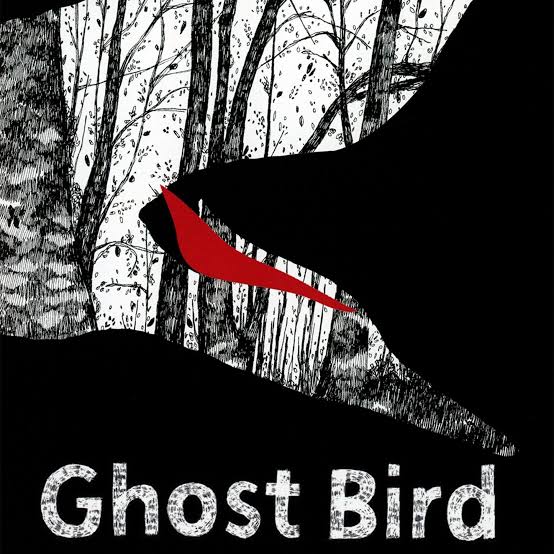 Ghost Bird is a 2009 documentary centered on the small town of Brinkley in Arkansas, United States. It deals with the Ivory-billed Woodpecker, a species that is possibly extinct but whose continued existence remains highly debated. Ghost Bird is a 2009 documentary centered on the small town of Brinkley in Arkansas, United States. It deals with the Ivory-billed Woodpecker, a species that is possibly extinct but whose continued existence remains highly debated.
After a birdwatcher videotaped a white-winged bird believed to be the Ivory-billed Woodpecker, many birdwatchers came to visit Brinkley to see it for themselves. In February 2004, woodpecker gift shops opened in Brinkley. Filmmaker Scott Crocker gives a detailed look at each side of the argument in Brinkley, with interviews from both the locals and the tourists. Ghost Bird has received highly positive critical reception from all around North America. In 2010, The New York Times called it a "multilayered story that will fascinate practically everyone" and a "witty, wistful documentary". On Rotten Tomatoes it has a rating of 91% based on 11 reviews, and was selected at the 2009 Hot Docs International Film Festival. | | | | The March 2025 issue of Bird Watch and Wonder was produced by Ross Feldner | | | |  The Rachel Carson Council Depends on Tax-deductible Gifts From Concerned Individuals Like You. Please Help If You can. The Rachel Carson Council Depends on Tax-deductible Gifts From Concerned Individuals Like You. Please Help If You can. | | | |  Sign Up Here to Receive the RCC E-News and Other RCC Newsletters, Information and Alerts. Sign Up Here to Receive the RCC E-News and Other RCC Newsletters, Information and Alerts. | | | | | | | | | | | |